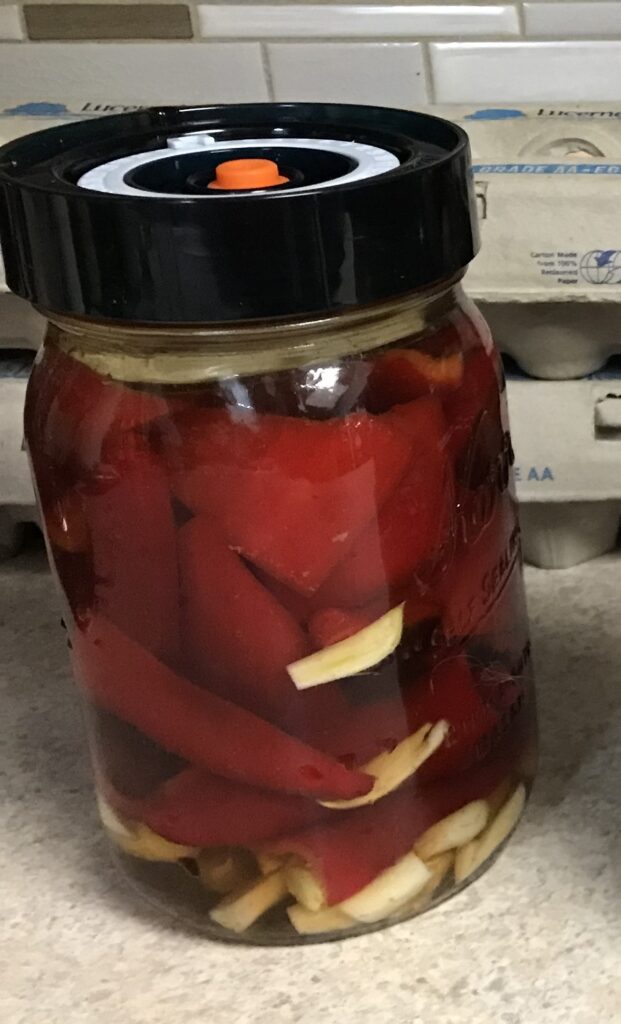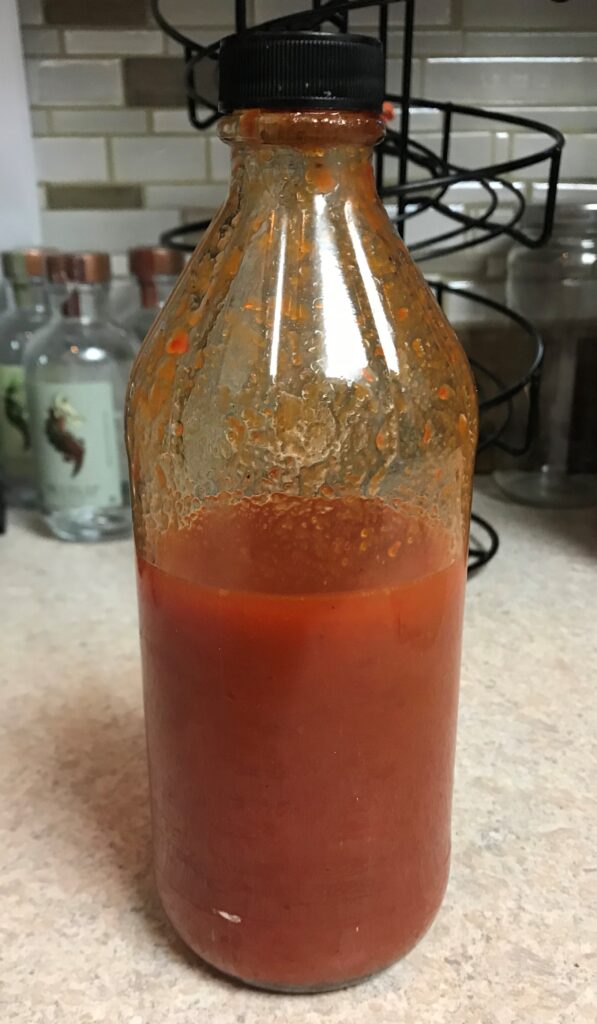Lacto-fermented Siracha
So let me let you onto a little secret about our family. My husband Loves siracha just as much as I Dislike peas. My son and I tease my husband relentlessly that he would put siracha on just about anything. So then my husband and son get to tease me relentlessly because I will not eat peas. I will not eat peas, here or there, I will not eat peas anywhere. Okay, sorry I got sidetracked by my thorough dislike of peas.
I realized after harvesting basket after basket of food from the garden that I needed to preserve it.. This led to my thinking that maybe I should preserve it in different ways than the typical canning. This then set me on the research path.
My family knows that when I get onto this path they better just hang tight and be okay with a quickly muttered “mmhmm” as I run back to my laptop, computer, or phone with a cup of coffee or tea in hand. This past summer I came across this article during one such day and right away felt like “yes! I need to try this idea!” So even though I didn’t have any hot peppers coming from the garden I jumped at this novel concept. I announced to my dear husband that I will be his heroine this year and I will make him Lacto-fermented siracha! Of course, as he is used to my enthusiasm when I’m excited, he just answered nonchalantly “Okay, that sounds great!”
My son and I set out a week later to the Safeway in Fairbanks to look for our ingredients. Fish sauce and garlic I had however I did not have the fresh red peppers or hot peppers. I also needed gochugaru which is simply Korean chili peppers that have been dried and powdered.
Those I ordered on Amazon however right after I received them a friend reminded me that the local Asian food market had it in stock. I completely had forgotten about the local Asian food market in my enthusiasm. You do only need a small amount each time you make this so I suggest sealing the package and then place the package into a freezer until you need it again. It smells very spicy and it will leach into other things nearby otherwise.

The key to Lacto-fermenting any veggie at home is to always remember the following:
#1. Lacto-fermentation is simply a controlled decomposition of vegetables.
#2. Make sure your veggies are completely covered by the liquid. Those veggies not covered have a higher chance of developing mold which makes them inedible. (at least I wouldn’t want to eat them)
#3. Your equation should always be for Lacto-fermentation: the weight of vegetables + weight of water x .025 salt. I find a kitchen scale is great for this. Using this formula allows you to take the guesswork out of any recipe.
Lacto-fermented Siracha Ingredients:
- Red Jalapenos (about 2 lbs worth if you are using a quart-sized jar)
- Garlic (10-15 cloves)
- Fish sauce (for umami, optional)
After the initial ferment add the following
- Sugar (to taste)
- Vinegar (adds flavor and reduces the pH)
Weigh your empty jar ahead of time or if your kitchen scale has a TARE on it you can use that. You need to make sure to account for the weight of the jar. Coarsely chop your red peppers and garlic. Pour water over the chopped ingredients. Measure your required salt (per formula above). Pour out the water and mix with the salt and then pour brine back into the vegetable mix.
If you have a fermenting top along with fermenting weights then you’ll have a super easy time but it can be done with mason jars and airlocks. Here is a link over at Amazon if you are interested in those styles of tops. You just might have more issues with spoilage. I’ve provided a link to Amazon where you can buy both the fermenting tops and weights.
Almost done!
From this point, if you have fermenting weights add this on top of your vegetables, herbs, and brine water. Within the next day or two, depending on how warm your location is, you might notice bubbling occurring. This is a reason for celebration because your food is now fermenting!🎇 I know usually within three days if I have more than two or three jars on my counter my entire kitchen smells like odd combinations of pickles, sauerkraut, and rather funky cheese. Yes, odd I know. In all my years working with fermentation, I have found however that that odd fermenting smell is a sign that deliciousness soon follows.

Waiting is torture…
Within about seven days (give or take a few) you can start opening up your jar to smell and taste your wonderful creation. You will know when it’s perfect for you when the vegetables have just enough crispness or flavor. This is where it moves from science into art. You get to be the judge on your creation. Do you let it go longer for a more tart or sour finished product? Or is an eight-day fermentation just right for you?
I found with Lacto-fermented siracha usually 5-7 days worked for me. I then take the finished product and move it to my blender where I will blend until smooth and I added the vinegar and sugar sparingly. The now finished product gets moved into the fridge where the flavors will become a bit more complex. For ease of pouring I moved the now blending siracha into a bottle with a top so that we could just take it out of the fridge, shake it a bit or two and pour it on top of our eggs, breakfast burrito or any other dish that needs a bit of extra zest.
You can immediately start enjoying from that point on!

Read more on the health benefits of including dishes like Lacto-fermented siracha here


